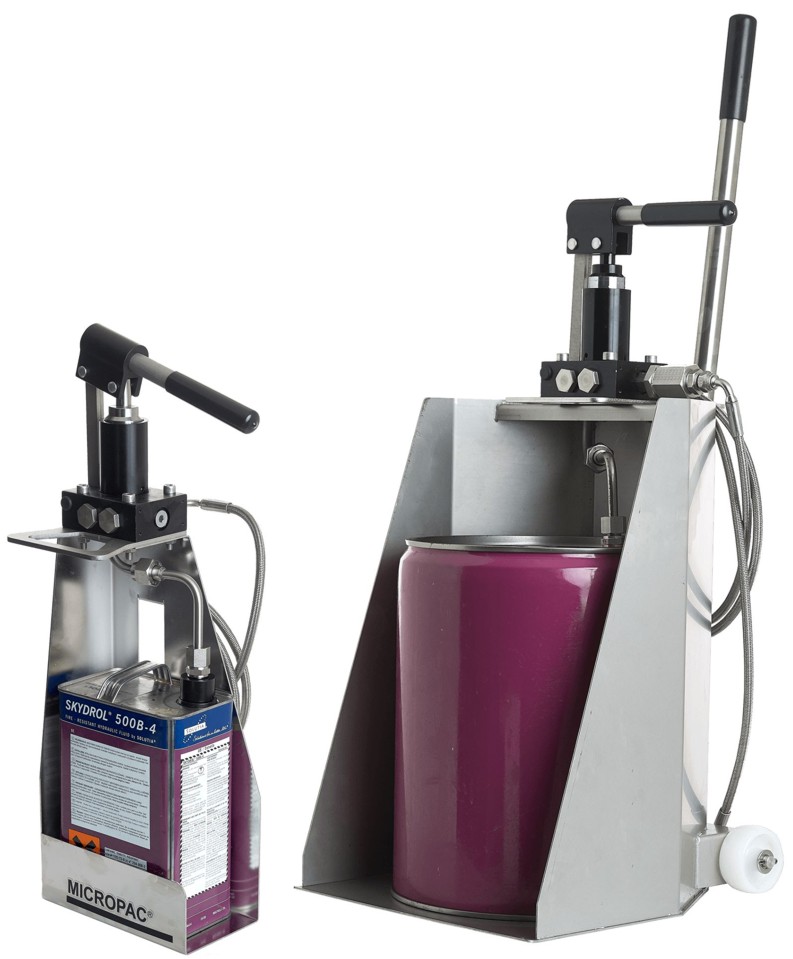Modern technology tends towards the sophisticated, but this is not always a good thing. We have been reminded in recent months about the power of wind and water, and it is a common complaint that sophisticated technology is more prone to failure in extreme conditions. It can be too hot, too cold, too windy, too wet…or the conditions can lead to total failure of the electricity supply, destruction of optimum operating environments, or simply the absence of items needed to repair what is usually a simple fault. And as extreme conditions get more likely, we have to factor these into our business and designs.
So how do we ensure that machines can still operate under extreme conditions? Most have a standby mode, which can either mean storing the power to keep something operating, for example by using batteries or accumulators, or providing some means of hooking up human power such as a hand crank, hand generator or hydraulic hand pump.
Sarum Hydraulics has been making standby hydraulic hand pumps for thirty years, and we’ve learned a lot about the basics that make a good standby.
Design for the worst case scenario.
If your standby mode relies on a supply of electricity, what are you going to do when the supply fails? Ensure your standby mode really can operate in the worst conditions that it needs to, whether with a back-up battery or using human power.
Sometimes, simple is better.
Consider a single failure mode, and keep the standby mode simple. Open it, close it, turn it. Maybe you just need a low tech way of achieving one thing in an emergency.
Keep emergency controls simple.
When people are under pressure or at the end of a chain of command, complicated procedures can be asking too much. A design that involves setting lots of levers, valves and knobs sounds like trouble.
Make it rugged.
I know that you cannot allow for every failure mode, but if there is a risk of damage, try to ensure the standby device won’t get damaged as well – the battery pack flooded or crushed, or hydraulic pipework sheared off. Just think what might happen and try not to make the design too vulnerable.
Make it corrosion resistant.
Always the Achilles heel of standby: you come to use the gear in an emergency and it does not work. Use durable materials and try to persuade the user to regularly test the standby device.
Remember, a human cannot do the impossible.
Do your sums: humans can only generate a certain energy for so long. Be conservative. Remember to design around a world population, not a presumption that everybody is a machine. Despite a diet of superhero films, even an athlete can only exert a certain amount of energy for a period. A lighter load and more cycles is preferable. Don’t forget ergonomics. Easy to use for everybody is your aim, because awkward makes the job seem much more difficult.
When the chips are down, people will persevere.
Sarum has always had expertise in actuation where in the limit, somebody may be sent out (or even undersea) to manually shut a valve using one of our standby hand pumps. In the absolute worst case – if it’s the only way to shut that flood gate or prevent another Piper Alpha – even 350 strokes isn’t too much if it gets the job done.
The ultimate aim of a standby is to be there when everything else goes down. Our aim is to make sure that the standby is there, working, and gets the job done.
For further information on the Sarum Hydraulics hand pumps or other units in the Micropac range, please visit www.sarum-hydraulics.co.uk.





Leave A Comment